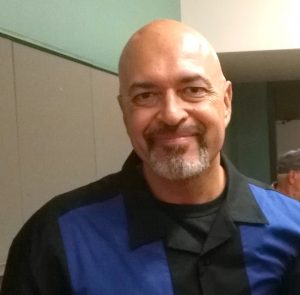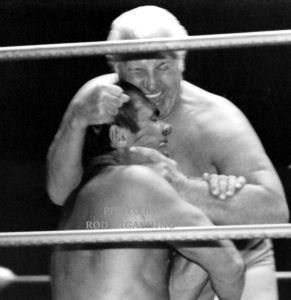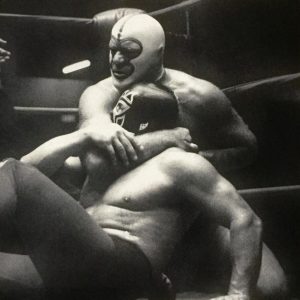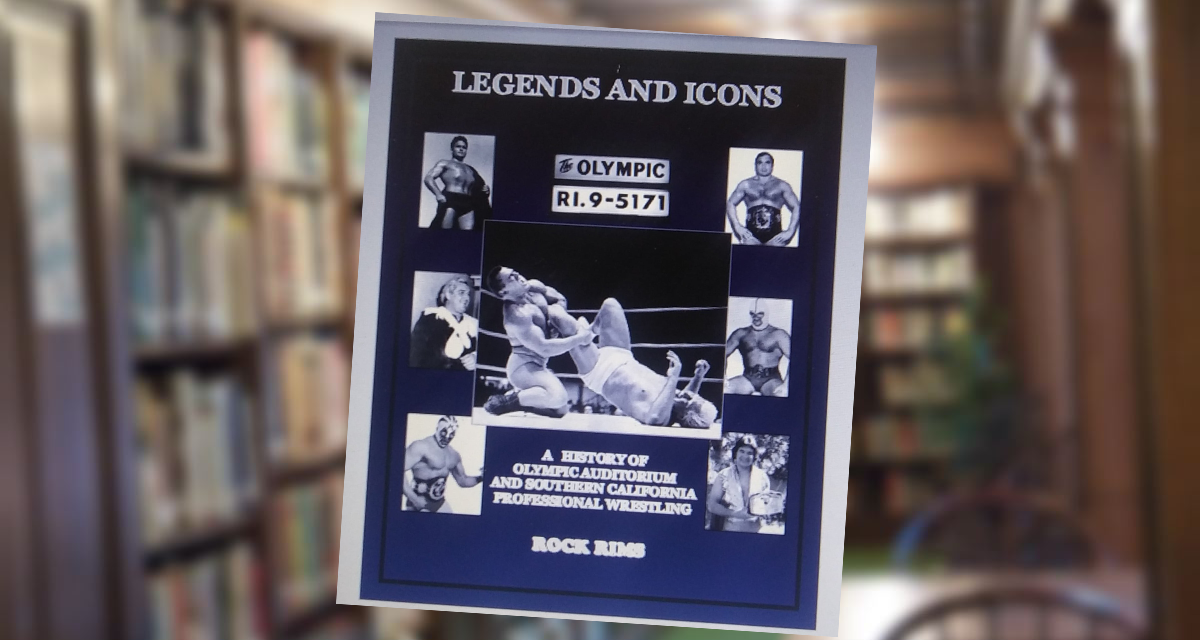When a book goes into its second printing and sells out in a short amount of time, it can be considered a pretty big deal. But it’s a very big achievement for a professional wrestling book, especially one that is geared mainly for the historians, to make that same claim. Legends & Icons: A History of Olympic Auditorium and Southern California Professional Wrestling by Rock Rims and self-published under Rims’ Flying Body Press brand, is now in that category.

Rock Rims. All story photos contributed by Rims.
Truth be told, unless you were living there during its heyday or you’re the most ardent professional wrestling fan, you really don’t have any idea of how important southern California was to the industry, and how influential they remained for generations. This is somewhat by design, as current power brokers would lead you to believe that professional wrestling all started with them.
Today’s followers of the sport may have cursory knowledge of some of the figures and events that took place over the years, but it usually focuses on Freddie Blassie versus John Tolos, the annual battle royals, or the waning years of the territory when Mike LeBell (an accountant) was unwilling to put the funds needed into his promotion to keep it viable. People remember some of the names of the participants – like Mil Mascaras, The Destroyer, Gordman and Goliath – but have no idea how they fit into this region, and how they all played a part in making this one of the industry’s great powerhouses.
This book rights a lot of the wrongs and helps put southern California wrestling into proper historical perspective. We get to see how it all began, and why its contributions should never be forgotten.
Many tried in the early days to gain a foothold in the area and build up the viability of professional wrestling, which always had a reputation for not being on the level, even in the late 1800s. Many failed. It took a shameless self-promoter named Lou Daro, who was famous for working a strongman gimmick akin to the Great Antonio or Jos LeDuc, to turn the tide. “Carnation Lou,” a wrestler of moderate success, had the fight and the magnetism needed to build public interest and legitimacy. Daro was a scrapper who knew how to sell the gimmick, and it worked. (Promoters like Jack Pfeffer, who is now better known to the casual historian, learned much from watching Daro work his magic.)
Daro signed a three-year deal with the new Olympic Auditorium in 1925, a sporting show palace with a design that provided unobstructed views ideal for professional wrestling and as this book points out was often “hailed as the Madison Square Garden of the west coast.” It began a tradition that lasted nearly 60 years, which was not only important to the wrestlers, but the very culture of southern California. As the area’s population expanded, people’s love for professional wrestling grew with it.

Freddie Blassie takes a bite out of Maniac John Tolos. Photo by Rod Higashino.
The sport evolved from grappling into one with a little more showbiz out of pure necessity. Jim Londos was a marketable star because of his movie star good looks and having a body like a Greek god. Football players, like Gus Sonnenberg, introduced a flashier style of performance to excite the crowds. Some used gimmickry, like Jimmy El Pulpo with his octopus hold, or the Arkansas Scufflers, who used a backwoods hillbilly gimmick. Long before television, this was an accepted element of the business. And in the epicenter of entertainment, a little razzmatazz was needed to remain a viable form of entertainment.
This is just the beginning of the book’s epic journey, as it evolves into a landscape the modern fan is a little more familiar with.
Of course, men like Buddy Rogers, Lou Thesz and Gorgeous George are covered here, because they have to be. And they are looked at with the same kind of detail, how they not only influenced the entire industry, but specifically how they affected the region. It’s a fascinating take on a lot of things most hardcore fans think they already knew. And you get to meet men who were every bit their equal at the time, like Baron Michele Leone and Enrique Torres.
The most gratifying part of this book is it brings to life names you may have heard mentioned and revered by the old guard, but never knew why. Just because somebody doesn’t have a Wikipedia page or detailed stats on the internet doesn’t mean they weren’t important. And, in a wonderful way, you can feel the tide turn as this book unfurls. For example, you learn about the wrestling career of Leo Garibaldi, a second-generation performer with a baby face and a likeable charm, who was also one of the biggest stars of the 1950s. Garibaldi, a member of a famous wrestling family that included father Gino, became the world junior heavyweight champion in 1950 by defeating Count Billy Varga. A shoulder injury in 1960 ended the in-ring career of Garibaldi, but kicked off a more remarkable chapter of his life. To this day, there are many that consider Garibaldi one of the greatest bookers of all-time.

The Destroyer vs Mil Mascaras. Photo courtesy of the Jim Glenn Collection.
Another man, whom many would also name as one of wrestling’s greatest minds, was Roy Shire, the erstwhile “Professor” and successful heel throughout southern California, who would emerge as the kingpin of wrestling in the northern part of the state and a major power player in the National Wrestling Alliance (NWA). Here we learn about the foundation that led to his greatness.
Of course, the flamboyant and charismatic Blassie is covered extensively and you learn about why he became so beloved throughout the world. All of the names you associate with the territory are explored here, from its glory period until the bitter end.
This book will absolutely help fill in the gaps in your professional wrestling knowledge base and make you embrace the business even more. Rims was the perfect person to make this book a reality. He is a longtime historian with an eye for detail who really put his heart into this effort. He did all of us a huge favor by putting together all of this information. It will be a cherished resource for all serious scholars. It’s a dry read at times, so I wouldn’t really say it’s for the casual fan. Little matter, because those who love the sport and want to expand their knowledge base will find in this book a treasure trove.
EDITOR’S NOTE: The first two printings of Legends & Icons, A History of Olympic Auditorium and Southern California Professional Wrestling sold out, but Rims has ordered a third reprint. The cutoff day for ordering is April 30, 2021. To buy a copy you can email Rims at Rockrims@aol.com
RELATED LINKS
- Rock Rims: Facebook and Twitter
- March 13, 2021: Barnhizer scrapbook whisks readers away to another time
- May 28, 2017: Book on Northern California is “big time” good
- SlamWrestling Master Book List

